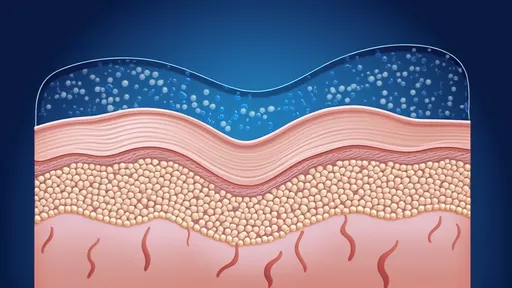The beauty and wellness industry is no stranger to bold claims, but the latest buzz around telomere-lengthening patches has captured the attention of both scientists and consumers alike. Dubbed as "longevity stickers," these transdermal patches promise to deliver telomerase activators directly through the skin, potentially slowing cellular aging. While the concept sounds like science fiction, the underlying science of telomeres and telomerase has been the subject of serious research for decades. The question now is whether this innovative delivery method could revolutionize anti-aging interventions or if it’s merely another overhyped trend.
Telomeres and the Aging Puzzle
At the heart of this discussion are telomeres—the protective caps at the ends of chromosomes that shorten with each cell division. Over time, this shortening contributes to cellular aging and dysfunction. Telomerase, an enzyme that can elongate telomeres, has long been studied for its potential to counteract this process. However, activating telomerase systemically raises concerns, particularly in cancer research, where uncontrolled telomerase activity is a hallmark of many malignancies. The challenge has been to find a targeted, safe way to harness telomerase’s potential without unintended consequences.
The emergence of transdermal patches as a delivery mechanism offers a compelling solution. Unlike oral supplements or injections, these patches aim to provide a steady, localized release of telomerase activators, such as TA-65 or cycloastragenol. Proponents argue that this method could minimize systemic exposure while maximizing efficacy. Early adopters, often biohackers and longevity enthusiasts, report improved skin elasticity and energy levels, though rigorous clinical data remains scarce. Skeptics, however, caution that the long-term effects are still unknown.
The Science Behind Transdermal Delivery
Transdermal technology isn’t new—nicotine patches and hormone therapies have used this route for years. What’s novel is its application to telomerase activators. The skin’s outer layer, the stratum corneum, is a formidable barrier, making it difficult for large molecules to penetrate. Formulators of these patches claim to use advanced liposomal or nanoemulsion systems to enhance absorption, though independent verification of these claims is limited. Critics point out that even if absorption occurs, whether the activators reach the bloodstream in sufficient quantities to affect telomeres systemically is far from certain.
One of the most discussed ingredients in these patches is cycloastragenol, a compound derived from astragalus root. In vitro studies suggest it can modestly increase telomerase activity, but human trials have been small and short-term. A 2011 pilot study showed telomere lengthening in immune cells after a year of TA-65 supplementation, but the results haven’t been replicated on a larger scale. Without peer-reviewed studies specifically on transdermal delivery, the patches operate in a gray area—somewhere between plausible science and aspirational marketing.
Ethical and Regulatory Hurdles
The commercialization of telomere-lengthening patches also raises ethical questions. Longevity is a lucrative market, and products often debut with hefty price tags despite inconclusive evidence. Some patches retail for hundreds of dollars per month, targeting affluent consumers willing to gamble on unproven benefits. Regulatory agencies like the FDA have yet to evaluate these claims, leaving consumers to navigate a landscape rife with exaggerated promises. Unlike drugs, which require rigorous testing, these patches often fall under the less stringent category of cosmetics or supplements.
Moreover, the psychological impact of such products can’t be ignored. The allure of "defying aging" taps into deep-seated fears of mortality, potentially leading to unrealistic expectations. While maintaining telomere length is one piece of the aging puzzle, it’s far from the only factor. Lifestyle choices like diet, exercise, and stress management play well-documented roles in longevity, yet they lack the glamour of a high-tech patch. Experts worry that an overemphasis on quick fixes could divert attention from evidence-based practices.
The Future of Telomere Therapeutics
Despite the uncertainties, the interest in telomere-lengthening patches reflects a growing demand for actionable anti-aging solutions. Researchers are calling for more robust studies to validate both the safety and efficacy of transdermal telomerase activators. If proven effective, these patches could become a mainstream tool in longevity medicine—not as a standalone miracle, but as part of a holistic approach to aging. For now, consumers are advised to approach these products with cautious optimism, scrutinizing claims and consulting healthcare professionals before investing in the promise of longer telomeres.
The intersection of cutting-edge science and consumer wellness is often messy, and telomere patches are no exception. They embody the tension between innovation and evidence, between hope and hype. As the science matures, one thing is clear: the quest to slow aging won’t be solved by a sticker, but it might open new avenues worth exploring.

By /Aug 7, 2025

By /Aug 7, 2025

By /Aug 7, 2025

By /Aug 7, 2025

By /Aug 7, 2025

By /Aug 7, 2025

By /Aug 7, 2025

By /Aug 7, 2025

By /Aug 7, 2025

By /Aug 7, 2025

By /Aug 7, 2025

By /Aug 7, 2025

By /Aug 7, 2025

By /Aug 7, 2025

By /Aug 7, 2025

By /Aug 7, 2025

By /Aug 7, 2025

By /Aug 7, 2025

By /Aug 7, 2025

By /Aug 7, 2025